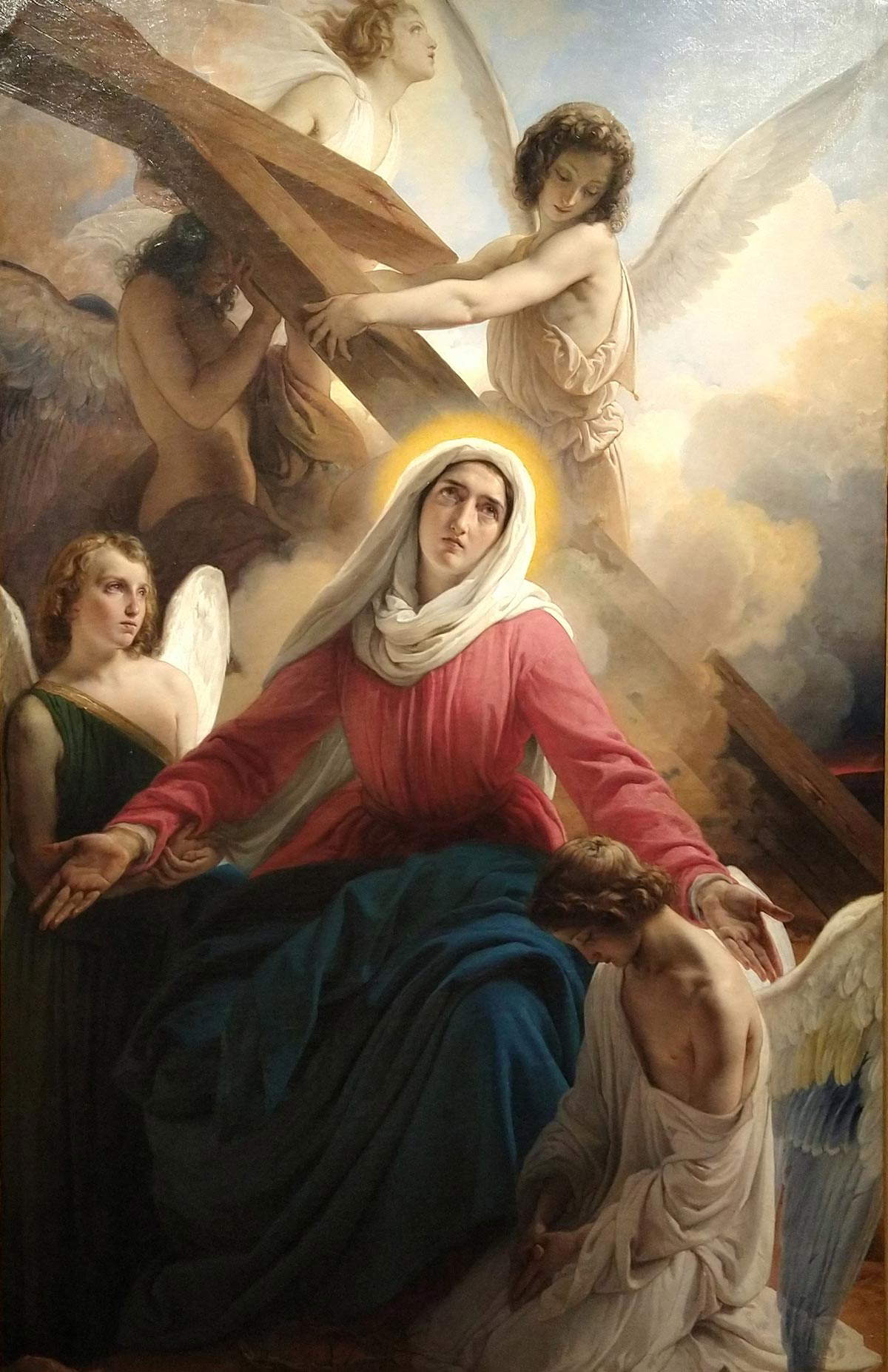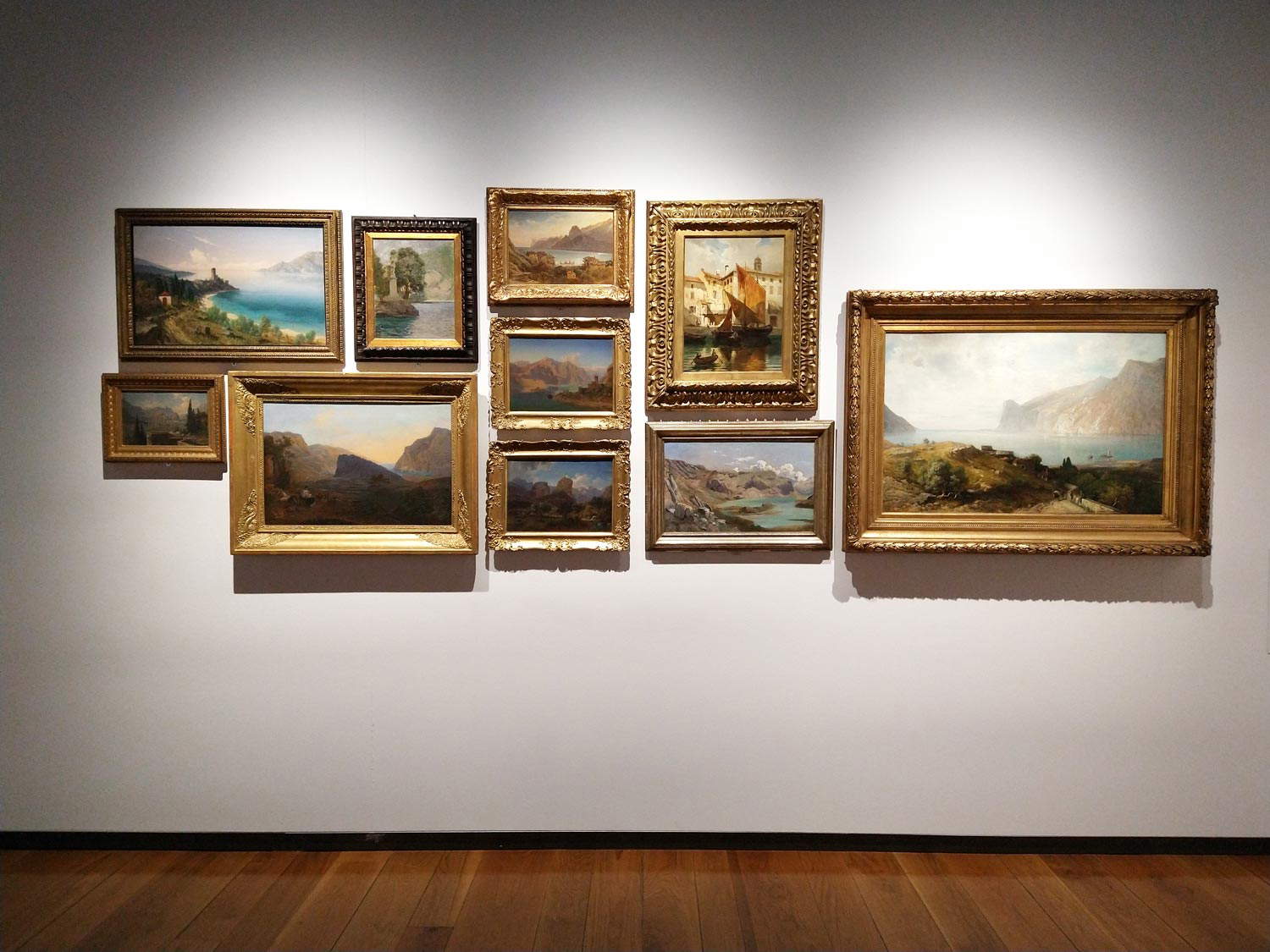A museum on the shores of the lake. The MAG of Riva del Garda
On the Trentino shores of Lake Garda is the Rocca di Riva del Garda, whose construction was strongly desired by Prince-Bishop Altemanno in 1124. The castrum novum, as named in ancient documents to distinguish it from the castrum vetus that stood in another area, was considered a fortress of primary importance for the defense of the entire city.It became the residence of the bishops-princes of Trent during the Renaissance after losing its military functions, and during Austrian rule it saw itself transformed into barracks, and its appearance changed multiple times throughout history, until it became an observatory during World War I. Most likely, at the time of Scaliger rule, it looked like a castle-fortress surrounded by water much like the one at Sirmione (which we have discussed in this article). Although today it is almost impossible to imagine its original form precisely because of the numerous renovations throughout history, some restoration work has nevertheless managed to bring to light some frescoes dating back to the Clesian period between 1514 and 1539, giving visitors a fleeting glimpse of times past. Inside the ancient Rocca is home, along with the Apponale Tower and Forte Garda on Mount Brione, to the MAG - Museo dell’Alto Garda of Riva del Garda, which was founded in 1992 with the aim of preserving, studying and enhancing the cultural heritage of theUpper Garda region. In these spaces, history and art dialogue with each other in a constant and mutual confrontation in which the future always looks to a past to which it owes so much.
The permanent sections include, first and foremost, the Picture Gallery where ancient sculptures and paintings are kept, including the splendid Imago Pietatis by the Master of St. Anastasia and a very rare iconographic subject such as the Church Ship painted by Elia Naurizio in the first half of the 17th century, and then the Garda landscapes by artists such as the local Giuseppe Craffonara, or even Giuseppe Canella, Ludwig Gebhardt, Ercole Calvi and others, the sensual muses caught in the fascinated gaze of 19th-century artists such as Vincenzo Vela (his Preghiera is splendid) and Francesco Hayez. One of the most important pieces here is by Francesco Hayez himself: his Addolorata of 1842. A painting, this one, from the collection of the Trentino man of letters Andrea Maffei, an authoritative and influential man who deeply marked the cultural life of the place in the second half of the 19th century. After hosting, in his Milanese residence, a literary salon frequented by the most interesting men of the time, in 1851 he moved to Riva del Garda with his precious collection, of which Hayez’s sorrowful work was a part. The Virgin’s Face is central and moves the viewer through her proud but tear-swollen eyes. The pain is shared and shared almost equally by the three angels behind her holding up the cross and another holding up her arm with majestic elegance, but the last angel, kneeling at Mary’s feet, is bent by a pain that seems to loom over her shoulders. This young figure overcome by suffering was taken by the artist directly from the teachings of sculptor Antonio Canova with his Penitent Magdalene, and this choice created great scandal. The work was not understood by contemporary critics precisely because painting did not used to trace sculpture so strongly, but it was the extreme modernity of the canvas with its strong chromatic dissonances and conspicuous use of drawing that fascinated Maffei, who did not hesitate to purchase it.




Another significant presence at the Pinacoteca is the Monogrammist FV, named for the initials with which he signed his works. An artist with a very strong personality, he lived in the first half of the 16th century and his works referable to the lower Trentino region can be found here, such as theAdoration of the Shepherds of 1530 and the Lamentation of the Dead Christ of 1531 from the Church of the Discipline in Riva del Garda.
Continuing the visit one will then find oneself in the rooms dedicated to History where it is possible to immerse oneself and imagine the past of Riva del Garda and Basso Sarca, which found itself now under Scaliger rule, now under Visconti and Venetian rule until the period in which it became a coveted tourist destination and saw illustrious guests such as Thomas Mann and Franz Kafka pass through. The short century of the twentieth century, torn apart by wars, is seen here from a political and administrative point of view through the account of the evacuation of civilians who, from the Ledro Valley and the Sarca plain to Dro and Ceniga, were interned in Bohemia and Moravia, but it is also narrated the annexation to the Kingdom of Italy, the rise of the fascist regime, and the German occupation of the provinces of Trento, Bolzano and Belluno, arriving at one of the most important episodes of the Trentino resistance. On June 28, 1944, the Nazis murdered eleven partisans and arrested several dozen, and from here, through a multimedia exhibition curated by Lorenzo Gardumi, we come to April 30, 1945, with the liberation of Riva by partisans and citizens, and conclude the historical section.
Then there is the Archaeological Section , which houses numerous artifacts ranging from the Middle Paleolithic (120000 to 33000 B.C.) to the Late Antique Early Medieval Age (7th-8th centuries A.D.). The skeleton of an individual about 20 years old, lame and with a head wound that probably caused his death, is preserved here, and he was carrying objects that can be dated to the 5th-4th centuries BCE. Researchers now believe it may have been a hunter, who fell absent-mindedly into the chasm that swallowed him for millennia. The remains were discovered by a group of speleologists in 1976, on Mount Altissimo at 1950 meters above sea level, in a very narrow chasm invaded by snow and ice.




The tour then continues in the section dedicated to Monte San Martino where archaeological excavations discovered a place of worship frequented first by the Rhaetian peoples, starting in the Iron Age, and later by the Romans, who transformed it into a real sanctuary. According to ancient legends, in the area between the Magnone and Gamella valleys, there was a mysterious village where a golden kid was erected. This one day came to life and hid in the “Fratta del Tesoro” to escape mortal gazes. And it was precisely by following the traces left by this legend that a group of scholars and local history enthusiasts, in 1969, undertook research that led to the identification of numerous artifacts precisely in the “Fratta del Tesoro.” The tour, which continues with a section of Roman epigraphs belonging to the 1st and 2nd centuries A.D. narrating sacred and everyday life, then concludes with late antique and early medieval artifacts from funerary contexts.
Travelers cannot miss the climb to the main tower known as the Mastio, from which there is a striking view from above of Lake Garda, and to the Apponale Tower. The latter, which can be reached from the museum by a short walk to the historic center, was first mentioned in 1273 and possesses this strange name probably because it overlooked the part of the port facing “a Ponale.” The tower, which was elevated in 1522 and was formerly used as a prison, bears on its top the figure of an angel that is now the symbol of Riva del Garda.
 |
| A museum on the shores of the lake. The MAG of Riva del Garda |
Warning: the translation into English of the original Italian article was created using automatic tools. We undertake to review all articles, but we do not guarantee the total absence of inaccuracies in the translation due to the program. You can find the original by clicking on the ITA button. If you find any mistake,please contact us.





























